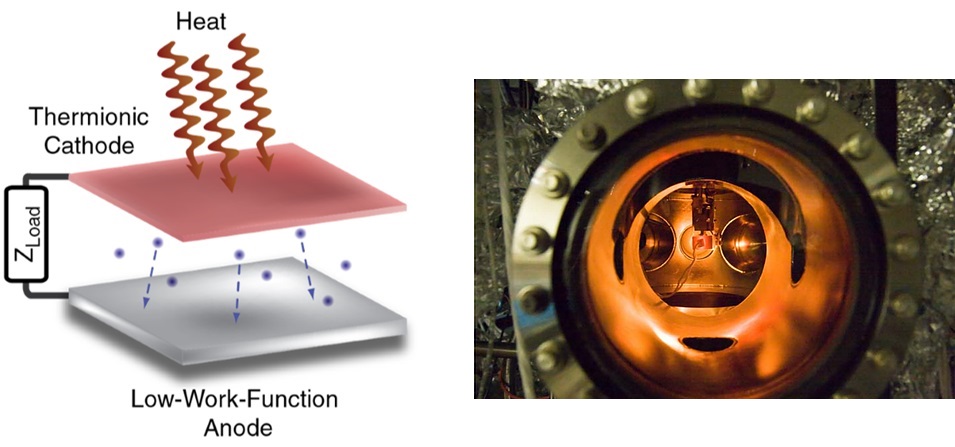Design & Fabricatiion of Thermionic Energy Convertors
Collaborators: Hongyuan Yang, Nicholas Melosh, Roger Howe
Advised by: Roger Howe, PhD
William E. Ayer Professor of Engineering,
Electrical Engineering,
Stanford University
My first research project at Stanford was on Micro-fabricated Thermionic Energy Converters (uTECs) in the NEMS lab with Professor Roger Howe in collaboration with Professor Nick Melosh. TECs are heat engines that convert heat directly to electricity at very high temperatures based on the principle of thermionic emission - the evaporation of electrons from conductors at high temperatures. In its simplest form, it consists of two electrodes (cathode and anode). The hot cathode emits electrons which will be caught by the cooler anode of a lower work function generating thermionic current (Fig 1).
Thermionics has a long history but has mostly seen limited applications for space due to certain challenges that couldn’t be solved before, such as space charge limit, large electrode spacings, thermal shorting, and thermal expansion mismatches. With recent advancement in nano/micro fabrication & 2D materials, as well as powerful computing methods, these devices can now be revolutionized.
My research involved designing and engineering the experimental set up and the optical test-bench for testing commercial cathodes with custom low work function anodes to prove the space charge limit in uTECs. I employed backside illumination techniques in high vacuum conditions for optically heating the cathode and also worked on reducing the anode-cathode gap for higher efficiency.
 Figure 1: (left) TEC Working principle, (right) Experimental Set Up
Figure 1: (left) TEC Working principle, (right) Experimental Set Up